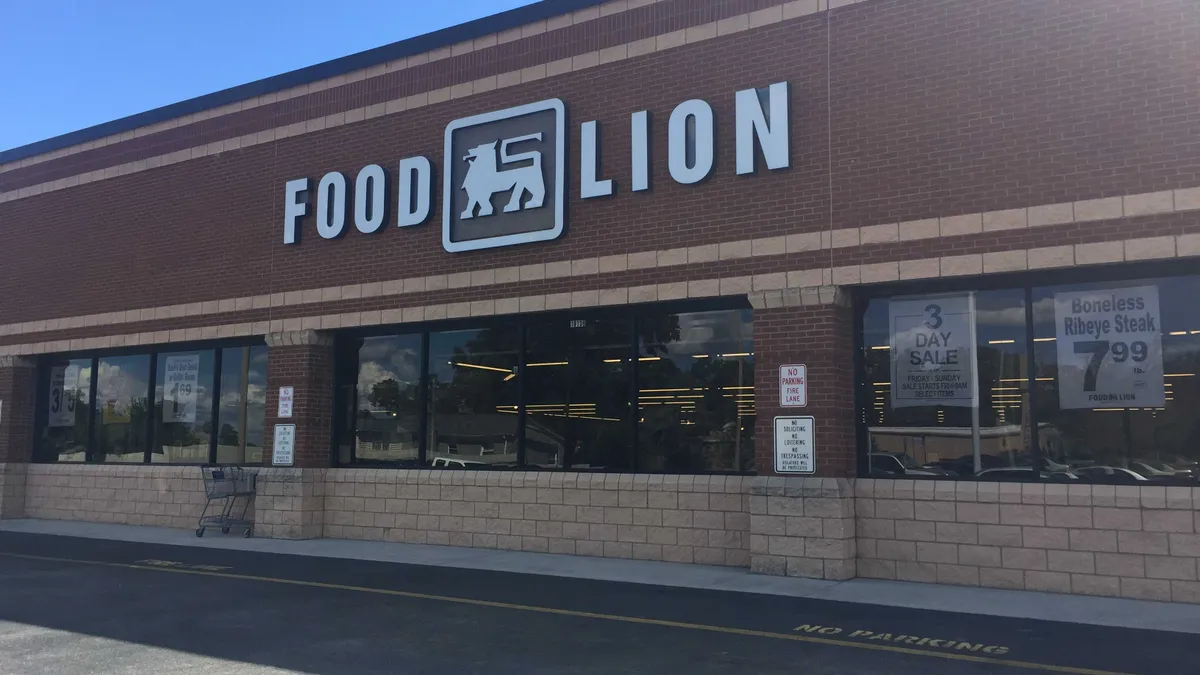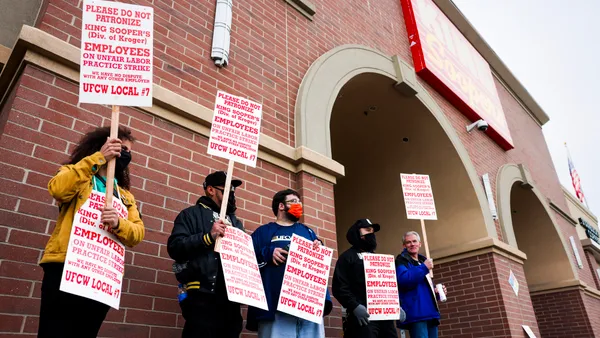Dive Brief:
- Ahold Delhaize reported a 20.6% increase in comparable store sales among its U.S. stores in the second quarter, driven by online growth of more than 127%, the company noted in its earnings release. Net U.S. sales for the period ended June 28 increased 19% to $14 billion and income from U.S. stores increased 113% to $852 million.
- CEO Frans Muller said during the company’s earnings call Wednesday morning that it’s seeing the fastest growth in click-and-collect, which currently represents around 40% of total online sales. Ahold Delhaize is quickly adding more pickup points and expects to increase its current total in the U.S. by more than 25%, to 1,100 locations.
- Ahold Delhaize raised its 2020 outlook across select financial metrics. It expects underlying operating margins to be higher than 2019 and earnings per share to increase in the low to mid-20% range, up from a previous prediction of mid single digits growth. The company expects its floor for free cash flow to be $2 billion, up from $1.8 billion in its previous outlook.
Dive Insight:
Ahold Delhaize, like other grocers, is increasing its digital investments to capitalize on a seismic shift in consumer spending that promises to remain elevated over the long term.
Pre-COVID, the company forecast online sales growth for this year of 30%. That increase is on track to be higher than 70%, to more than $8.3 billion, putting it more than a year ahead of its growth timeline.
Ahold Delhaize’s U.S. banners offer delivery up and down the East Coast, and during the second quarter it added the service to hundreds of stores in order to meet pandemic-fueled demand, including more than 600 locations across its Food Lion and Stop & Shop banners.
But the grocer is seeing greater consumer interest in click-and-collect, which Muller pointed out is favorable to Ahold Delhaize because it’s less costly to fulfill and utilizes more of the grocer’s own resources. Companies like Albertsons, Target, Sprouts and Aldi are also rapidly increasing their pickup availability.
“As click-and-collect is growing faster we will get to 50% [company online] share quickly… which will not only support customer demand and growth levels but also further profitability as click-and-collect has a better margin profile than delivery,” Muller said Wednesday morning.
To improve delivery profitability, Ahold Delhaize is currently piloting a micro-fulfilment center at one of its Connecticut Stop & Shop stores. That test has gone on longer than planned, Muller said, but he remains confident in the technology’s potential.
“We took a bit more time to look at the best performance opportunities there and we are still pushing productivity levels to standards we need,” he said.
Muller noted that all of Ahold Delhaize’s banners with the exception of Stop & Shop gained market share during Q2. Food Lion was its fastest growing brand in the quarter as it notched its 31st straight quarter of comparable sales growth fueled by extensive store remodels. That bodes well for the company’s decision to expand the brand earlier this year by acquiring 62 stores from Southeastern Grocers.
Although Stop & Shop has recently underperformed, its remodeled stores in Connecticut are outperforming its legacy stores. The chain plans to remodel more than 20 stores in the second half of 2020. In the company's last earnings call, it stated that the total number for the year would be less than the 65 it originally anticipated.
Grocers have been cautious about predicting the future financial impacts of COVID-19 due to the virus' unpredictability and continuing spread through the U.S. Ahold Delhaize raised its outlook for earnings and free cash flow, but declined to update its overall sales outlook. Chief Financial Officer Natalie Knight said the company has likely seen its peak demand during the pandemic, and as a result, sales will moderate in the second half of the year.
At the same time, Ahold Delhaize expects costs related to COVID, which totaled $309 million in Q2 and $393 million in the first half of the year, will remain elevated. The company will also be spending more on omnichannel investments, which promises to cut into margins.
Adding color to the company’s sales outlook, Muller noted that regional differences in COVID-19 infection rates are impacting its stores’ performance. Food Lion stores, for instance, are seeing more of a sales tailwind than its Hannaford locations.
“In the U.S., sales number vary with COVID-19 effects,” Muller said. “In the Southern U.S. we see more infection levels than in the northern part, and we see a difference in total performance there for Carolinas versus Vermont and Maine, for example.”













